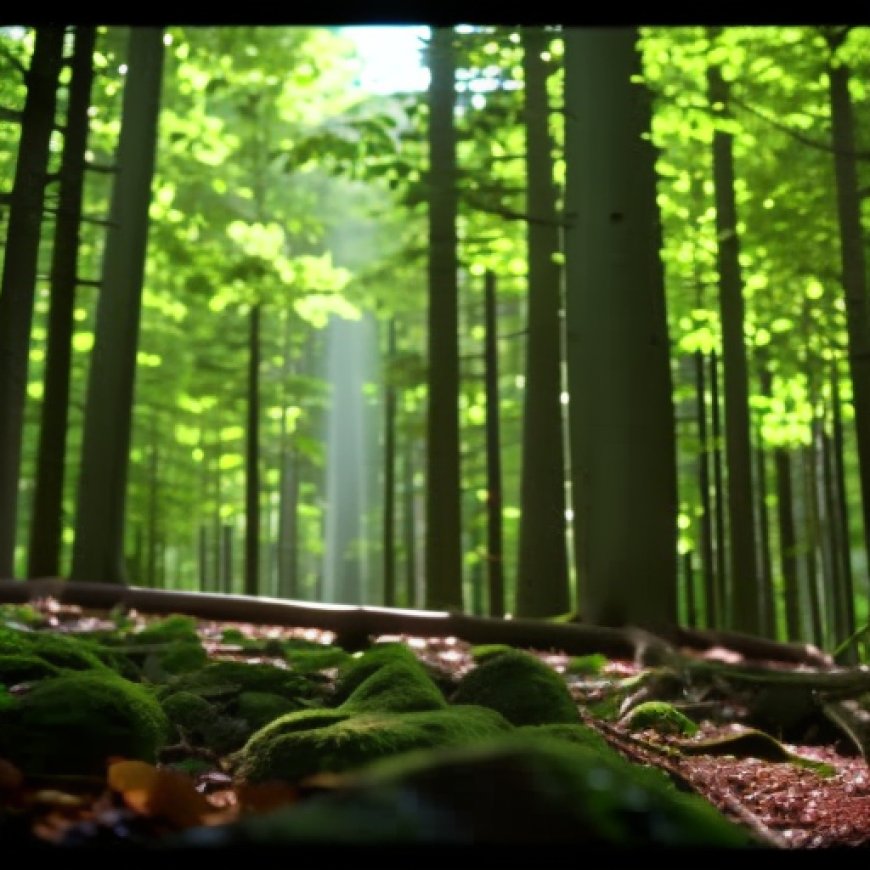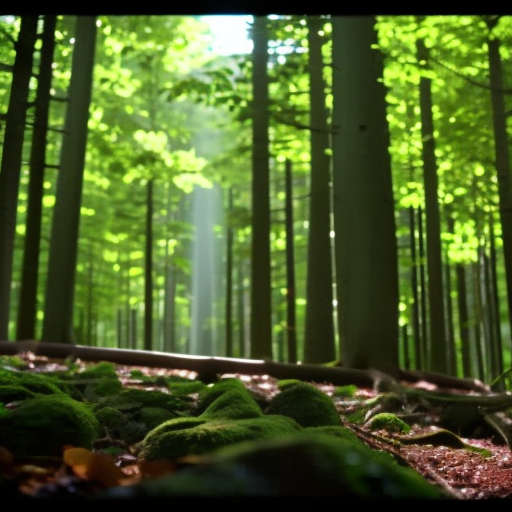In Germany’s Black Forest and beyond, a quiet loss of biodiversity
In Germany's Black Forest and beyond, a quiet loss of biodiversity The World from PRX


The Loss of Biodiversity in Germany’s Black Forest

Introduction
Germany’s Black Forest, known for its enchanting fairytales, is facing a hidden threat to its biodiversity. The loss of species in this picturesque landscape is not easily visible to the naked eye. This article explores the need for specialized research to understand the extent of plant loss and highlights the impact of climate change on this phenomenon.
Research and Findings
In 2017, Thomas Sperle initiated a survey of numerous bogs in Germany’s Black Forest. Over three years, he meticulously counted plants, comparing the data to a survey conducted 50 years ago. The results revealed a significant decrease in the number of plant species present today. Two plant species have already gone extinct, and several more are at risk of disappearing within the next 15 years.
The declining plant species are predominantly specialists, thriving in specific environments. In contrast, generalist plants, adaptable to various conditions, are increasing in number. Sperle and his research partner, Helge Bruelheide, attribute this homogenization to the effects of climate change, particularly hot and dry summers.
Another study conducted by Bruelheide in northern Germany showed a greening of the landscape over two decades. While this may seem positive at first glance, it actually signifies a loss of biodiversity and colorful meadows. The decline in colorful flowers leads to a reduction in pollinators, impacting the overall ecosystem.
Elizabeth Borer, a researcher at the University of Minnesota, investigates biodiversity through experimental methods. Her work focuses on simulating future Earth conditions by altering environmental factors. Borer’s experiments reveal that higher nutrient levels, resulting from human activities such as burning fossil fuels, lead to a continued loss of plant species.
Implications and Importance
The loss of biodiversity has far-reaching consequences for the planet. Fewer plants mean a decline in pollinators, crucial for food production. Additionally, plants play a vital role in carbon storage, mitigating climate change. Bogs, in particular, are exceptional carbon sinks.
Sperle warns that if no action is taken, the bogs in the Black Forest could disappear entirely by the end of the century. Recognizing the urgency, he has transitioned from research to practical measures. By providing additional water to the endangered Betula nana birch tree, he managed to stabilize the remaining population.
Every species lost has unknown repercussions for the ecosystem. It is essential to conduct further research and take action to prevent further extinctions and preserve biodiversity.
Conclusion
The loss of biodiversity in Germany’s Black Forest serves as a stark reminder of the hidden threats faced by ecosystems worldwide. Specialized research is necessary to uncover these extinctions, often masked by beautiful trees and green spaces. By emphasizing the Sustainable Development Goals (SDGs), such as Life on Land (SDG 15) and Climate Action (SDG 13), we can prioritize conservation efforts and protect our planet’s diverse ecosystems.
SDGs, Targets, and Indicators
| SDGs | Targets | Indicators |
|---|---|---|
| SDG 13: Climate Action | Target 13.1: Strengthen resilience and adaptive capacity to climate-related hazards and natural disasters | Indicator not mentioned in the article |
| SDG 15: Life on Land | Target 15.5: Take urgent and significant action to reduce the degradation of natural habitats, halt the loss of biodiversity, and prevent the extinction of threatened species | Indicator not mentioned in the article |
| SDG 15: Life on Land | Target 15.9: By 2020, integrate ecosystems and biodiversity values into national and local planning, development processes, poverty reduction strategies, and accounts | Indicator not mentioned in the article |
| SDG 15: Life on Land | Target 15.b: Mobilize significant resources from all sources and at all levels to finance sustainable forest management and provide adequate incentives to developing countries to advance such management, including for conservation and reforestation | Indicator not mentioned in the article |
| SDG 15: Life on Land | Target 15.c: Enhance global support for efforts to combat poaching and trafficking of protected species, including by increasing the capacity of local communities to pursue sustainable livelihood opportunities | Indicator not mentioned in the article |
1. Which SDGs are addressed or connected to the issues highlighted in the article?
- SDG 13: Climate Action
- SDG 15: Life on Land
The issues highlighted in the article are connected to SDG 13 as they discuss the impact of climate change on biodiversity and the loss of species. They are also connected to SDG 15 as they address the loss of biodiversity, degradation of natural habitats, and the extinction of threatened species.
2. What specific targets under those SDGs can be identified based on the article’s content?
- Target 13.1: Strengthen resilience and adaptive capacity to climate-related hazards and natural disasters
- Target 15.5: Take urgent and significant action to reduce the degradation of natural habitats, halt the loss of biodiversity, and prevent the extinction of threatened species
- Target 15.9: By 2020, integrate ecosystems and biodiversity values into national and local planning, development processes, poverty reduction strategies, and accounts
- Target 15.b: Mobilize significant resources from all sources and at all levels to finance sustainable forest management and provide adequate incentives to developing countries to advance such management, including for conservation and reforestation
- Target 15.c: Enhance global support for efforts to combat poaching and trafficking of protected species, including by increasing the capacity of local communities to pursue sustainable livelihood opportunities
The article’s content aligns with these targets as it discusses the need to strengthen resilience to climate change, halt the loss of biodiversity, integrate biodiversity values into planning and development processes, mobilize resources for sustainable forest management, and combat the extinction of species.
3. Are there any indicators mentioned or implied in the article that can be used to measure progress towards the identified targets?
No, the article does not mention or imply any specific indicators that can be used to measure progress towards the identified targets.
4. SDGs, Targets, and Indicators
| SDGs | Targets | Indicators |
|---|---|---|
| SDG 13: Climate Action | Target 13.1: Strengthen resilience and adaptive capacity to climate-related hazards and natural disasters | Indicator not mentioned in the article |
| SDG 15: Life on Land | Target 15.5: Take urgent and significant action to reduce the degradation of natural habitats, halt the loss of biodiversity, and prevent the extinction of threatened species | Indicator not mentioned in the article |
| SDG 15: Life on Land | Target 15.9: By 2020, integrate ecosystems and biodiversity values into national and local planning, development processes, poverty reduction strategies, and accounts | Indicator not mentioned in the article |
| SDG 15: Life on Land | Target 15.b: Mobilize significant resources from all sources and at all levels to finance sustainable forest management and provide adequate incentives to developing countries to advance such management, including for conservation and reforestation | Indicator not mentioned in the article |
| SDG 15: Life on Land | Target 15.c: Enhance global support for efforts to combat poaching and trafficking of protected species, including by increasing the capacity of local communities to pursue sustainable livelihood opportunities | Indicator not mentioned in the article |
Behold! This splendid article springs forth from the wellspring of knowledge, shaped by a wondrous proprietary AI technology that delved into a vast ocean of data, illuminating the path towards the Sustainable Development Goals. Remember that all rights are reserved by SDG Investors LLC, empowering us to champion progress together.
Source: theworld.org

Join us, as fellow seekers of change, on a transformative journey at https://sdgtalks.ai/welcome, where you can become a member and actively contribute to shaping a brighter future.







